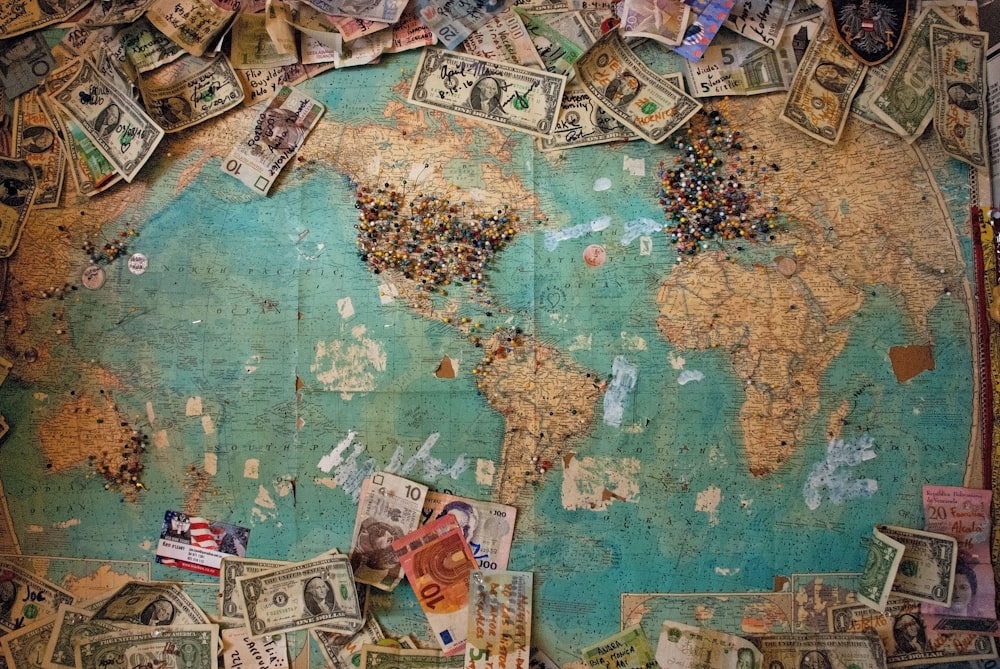

The Changing Policy Mix
At the heart of Chandler’s argument is the concept of the “policy mix” – the combination of monetary and fiscal policies that can significantly influence a currency’s strength. Historically, the most favorable policy mix for a strong currency has been tight monetary policy (raising interest rates) coupled with loose fiscal policy (government spending).This was the scenario in the mid-1980s under President Ronald Reagan, with tax cuts and increased spending creating large budget deficits, while Federal Reserve Chairman Paul Volcker tightened monetary policy. The result was a significant dollar overshoot.Now, Chandler argues, we’re on the verge of a shift in this policy mix. The Federal Reserve is expected to begin cutting interest rates, potentially as soon as September, with forecasts of two to three cuts this year. Meanwhile, fiscal policy remains loose, with neither major political party seriously addressing large-scale fiscal issues. Source: CME Group FedWatch tool
Source: CME Group FedWatch tool
“We should expect rate cuts in the second half starting in September—maybe two cuts this year, possibly three… So, we’re going to go to a looser monetary policy, and it is still a fairly loose fiscal policy. I think that is going to be the end of the super bull market we’ve had in the dollar.”
Overvaluation and Mean Reversion
Another key factor in Chandler’s bearish outlook is the current level of dollar overvaluation. Using the OECD’s model of purchasing power parity, Chandler notes that the Japanese yen is more than 60% undervalued against the dollar, even after a recent rally. The euro is similarly undervalued, by about 55%.These extreme levels of misalignment suggest that the dollar may be due for a correction. Chandler likens it to a stretched rubber band, noting that OECD currencies typically don’t move beyond plus or minus 20% of fair value. The combination of this overvaluation with the changing policy mix could trigger a significant reversion in the dollar’s value.
“In the currency markets, trends can last five or ten years sometimes, and that’s what we are really finishing here. What I think we are finishing is basically a rally in the dollar—a super-cycle rally in the dollar, if you will—that goes back to the end of the great financial crisis. And of course it didn’t move up in a straight line. There’s been some deep corrections…and it’s really a question of monitoring, managing, and preparing for what I think is going to be a weaker dollar going forward on a trend basis.”
Cyclical vs. Secular Trends
It’s important to note that Chandler is predicting a cyclical multi-year decline in the dollar, not a secular or structural one. He distinguishes between the price of the dollar and its role in the global economy. While he expects the dollar’s value to decrease over the next couple of years, he doesn’t foresee a fundamental change in the dollar’s function as the world’s primary reserve currency.Chandler pushes back against the notion of “de-dollarization,” arguing that the basis for the dollar’s role in the world economy isn’t likely to change fundamentally in the near term. He points out that even as alternative payment systems emerge and some countries seek to reduce their reliance on the dollar, the sheer size and liquidity of dollar-denominated markets make it difficult to replace.The foreign exchange market, Chandler notes, trades about $7.5 trillion per day – far exceeding global trade volumes and even world GDP. Thus, any movement to replace the dollar in global trade represents a small fraction of its use in the much broader and larger foreign exchange market. This immense liquidity, coupled with the dollar’s continued use in commodity trading and international lending, underpins its global role, Chandler believes.
Looking Ahead
While Chandler is confident in his prediction of a cyclical dollar decline, he’s careful to note the uncertainties involved. The unusual nature of the current economic cycle, with its pandemic-induced disruptions and unprecedented policy responses, makes forecasting particularly challenging.Nevertheless, Chandler believes that the combination of an overvalued dollar, shifting monetary policy, and a potential slowdown in economic growth creates a compelling case for dollar weakness in the coming years.As always, it’s important for individuals to consider their own financial situations and risk tolerances when making investment decisions. While expert analysis can provide valuable insights, the complex and often unpredictable nature of global markets means that no single viewpoint should be taken as gospel. Diversification, careful risk management, and ongoing education remain key principles for navigating the ever-changing world of international finance.More By This Author:Brace For Impact: Your Essential Guide To The Next Economic Revolution
Winter (Rate Cuts) Is Coming
mBridge And The Petroyuan: A New Era Of De-Dollarization















